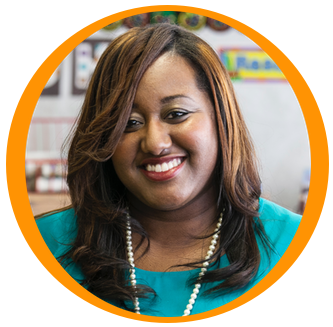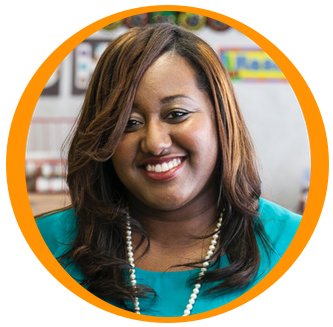Guide to Successful Parent Teacher Conferences
Today's blog post is brought to you by Tasia Fields of Great Minds Teach Alike, an online resource for all things education, with a focus on educational technology. Tasia is an educator with her Bachelors of Science in Education and her Masters in Curriculum and Instruction. Learn more about Tasia here and click here to visit the homepage of Great Minds Teach Alike.
GUIDE TO SUCCESSFUL PARENT TEACHER CONFERENCES
Here is your chance to share all you can about their students progress in your classroom. This is an amazing opportunity to build relationships and foster a partnership with parents. These 10 steps will help you maximize your time and ensure that your parents leave feeling informed, empowered, and involved in their students education. Get your notepad ready or better yet print this one out!
1. Scheduling
In most cases you will be approved a day or two to have parent teacher conferences. It is up to you to schedule your conferences accordingly. Figure out about how much time you can allot for each student’s conference. Start with 15 minute intervals them move up to 30 minutes if your schedule allows it. Remember to allot 5-10 minutes in-between each conference. You want to provide yourself with enough time to prepare before each conference. It’s nice to have a minute to refocus and shift your thoughts. A rule of thumb is to try to schedule everyone at least 2 weeks ahead of time. You want to send out an initial communication notifying families about conferences. You also want to use this notice to gauge availability. The best way to do this is to have parents give you more than one time of availability. Try your best to get as close as possible to parent preferences but if all else fails go with alphabetical order or a first come first served basis when scheduling. Make sure to send out time slot confirmations and at least 2 reminder notifications. I created a Conference Pack full of ready to use printable conference sheets it includes that initial communication I mention above with a parent survey for availability and translator request. Get yours here.
2. Set Up
Presentation is everything. It’s important to have a table set with enough seating for two parents and possibly the student. It is also a good idea to have a few chairs set up outside your room with a schedule posted. This is for you parents that come early. Set up should include an agenda posted, sign in sheet, and pens and pen holder. I also like to have a candy dish available. This shows that your are prepared and makes your families feel comfortable and confident in your abilities as an educator. An agenda should just outline the order which you will discuss things. This will help tremendously with keeping you on schedule and help you keep things flowing when conversation can gets away from us.
Bonus Tip! Print your agenda to poster size using your Perfecta™ 2400 or Poster Maker 3600 using Perfecta's PDF-to-Poster feature or Poster Maker's scan to print feature.
3. Student Work Samples
Every parent wants to see their students work. Provide samples of different types of student work done in your classroom. It’s always good to include a writing sample and weekly assessments such as; spelling tests or math quizzes. If there is an area that a student needs to improve in, provide examples where they are not meeting the requirement. In some instances you might include another students work that meets your expectations. This will really give parents an idea of what their student should be producing. Remember to keep the other students identity concealed. Choose items that give you the most insight on the student as well as supports the information you are presenting to the parents. Be mindful of time so limit your samples to 4 items or less.
4. Data
Data, Data, Oh Data!!!! The goal here is to show parents what level their student is currently working at, and what level they should be working at by the time they leave your class. Also explain your expected growth and timeline to reach that growth. Depending on what assessment tools your district use to track student data you want to provide more that one snapshot of student ability. I generally include MAP data, fluency rate, and a review of previous years state assessment scores.
5. Start with Positives
Always begin your conversation with positive things about the student. This will set the tone for the conference and make parents more receptive to your areas of concern. Some things you might highlight are; willingness to do well, positive attitude, always ready to give a helping hand, great contributions to discussion, strong leadership abilities. You should be able to say at least 3 positive things about all of your students. If you are struggling with this I would suggest trying to connect deeper with those students. Try to discover their areas of interest and connect that to academics. If you need more info click here to read an article about developing those relationships with students.
6. Areas of Concern
When addressing a problem or area of concern you want to be very clear. A concern or problem with a student can be behavioral, or an area where they are not performing. Concerns can also be developmental. It is very important to articulate what the concern is clearly. Providing examples of this behavior or concern will help. Explain why this behavior or area is a concern that needs to be addressed. Then explain what you would like the student to do to change this behavior. Ask parents if they have suggestions on ways to help their student improve. Don’t be afraid to in-list the help of other professionals such as the school social worker or administration if you feel uneasy about discussing some things.
7. Determine Goals
Here is where you can share the academic goals you want to reach with your students. Make sure they are attainable goals such as words read per minute, time spent reading outside of school. It is important to set goals that parents can help with at home in addition to school goals. Explain grade level expectations in reference to your goals. Remember you can set goals for all areas. For those silent observers set a goal to raise their hand 5 times a day to help increase participation. Be creative and focus on more than 2 at a time.
8. Suggestions for Parents
Here is where you can provide information on any outside resources that would be beneficial to parents. Such as outside tutoring services, or programs offered at your local library. Make sure you include information about your favorite on line tools that they could use at home with their students. You want your parents to leave feeling informed and equipped with things to try at home.
9. Questions
You always want your parents to feel welcomed to ask questions. It’s important to pause periodically and check for understanding (yup, with parents too) ask if they have any questions. Remember to remind them that if they think of a question later they can contact you easily.
10. Provide Artifacts
Provide your parents with something tangible that they can take home. This can be as simple as a report card or progress report. I would also add any printable information about the student you can. I created a great Conference Summary Sheet that highlights items discussed during your conference it also has a spot for notes that you can quickly write down for parents. It’s included in my Conference Pack, you can get yours here. This is a good time to send home any graded work or get needed signatures on forms. Take care of all you can while you have them there.
I hope you enjoyed this and gained some useful information when preparing for conferences. Your “teach away” is to think of your parents as partners in education, so get them on board by providing useful information and include them in the process.
 About the Author
About the Author
Tasia Fields is the founder and author of Great Minds Teach Alike. Her adoration with education began at a very young age, as she was the kid that always wanted to play school and of course had to be the teacher. She received her Bachelors of Science in Education at Western Michigan University in 2009, and her Masters degree in Curriculum and Instruction with a focus on ESL from Concordia University in Chicago. Tasia is currently working on Ed.S degree in administration and supervision.
About Great Minds Teach Alike
My name is Tasia Fields I am the founder and author of Great Minds Teach Alike. My adoration with education began at a very young age. I was the kid that always wanted to play school and of course had to be the teacher. As I blossomed into a young woman, I maintained positions as a peer-educator, and camp counselor. I then decided to pursue my dream of becoming an educator. I received my Bachelors of Science in Education at Western Michigan University (GO BRONCOS) in 2009. I finished my Masters degree in Curriculum and Instruction with a focus on ESL from Concordia University in Chicago. I am currently working on Ed.S degree in administration and supervision.


